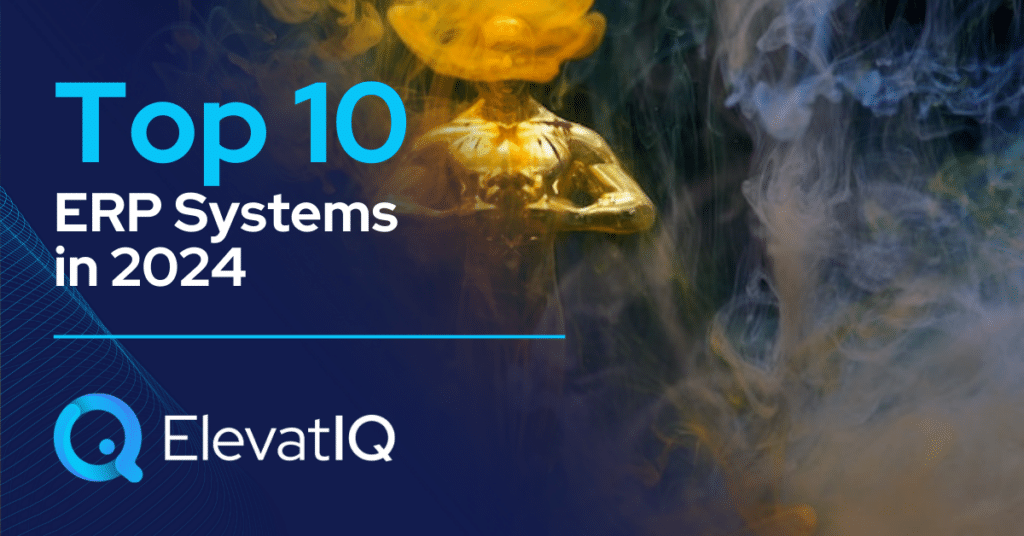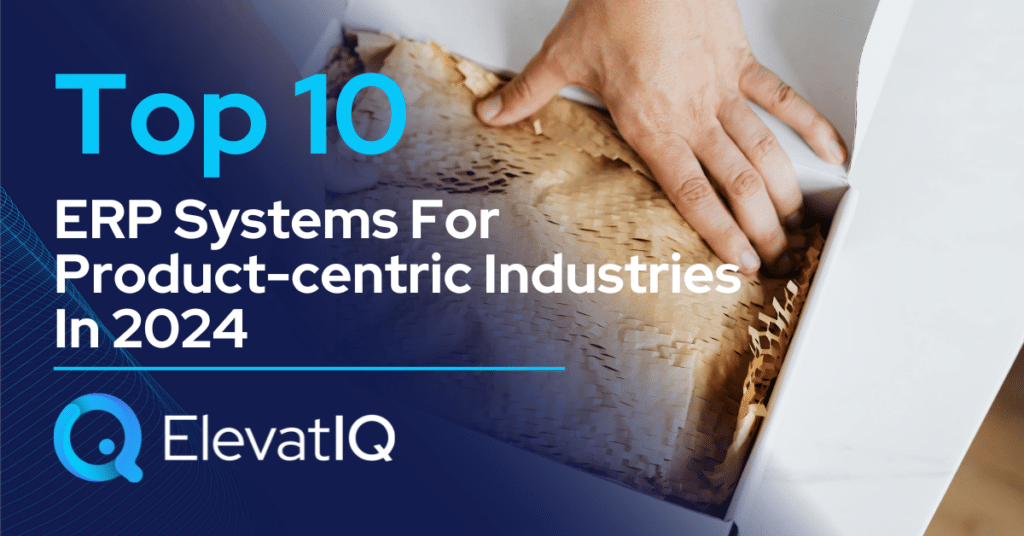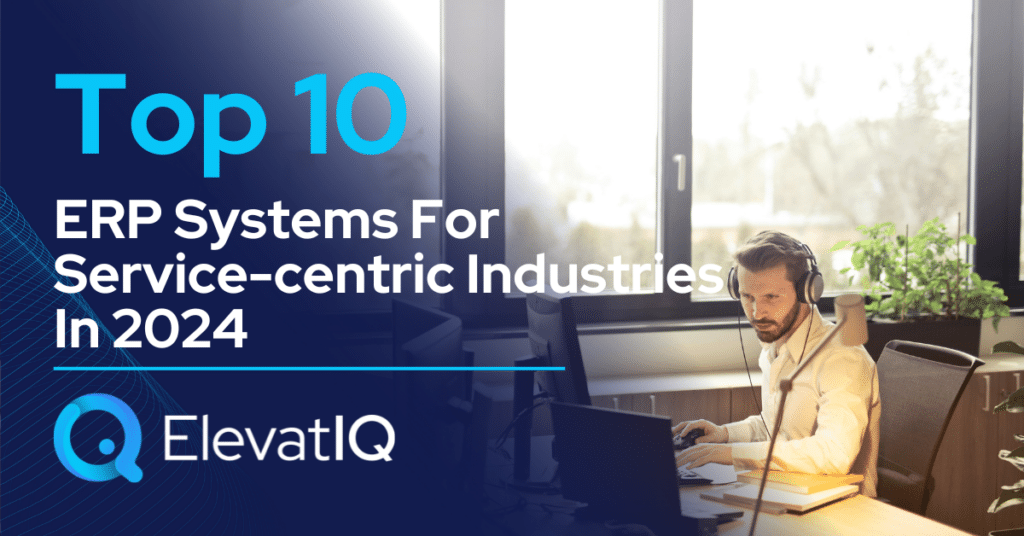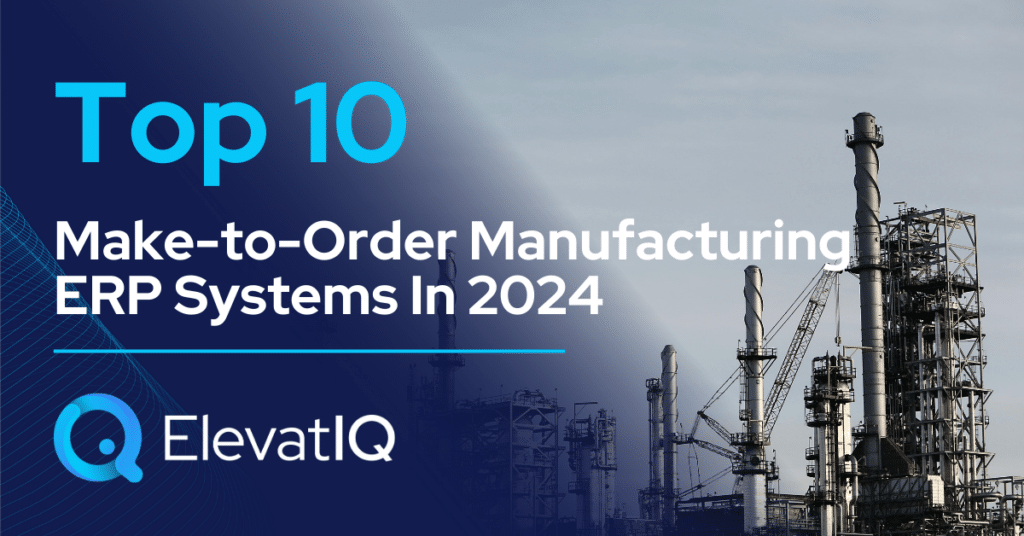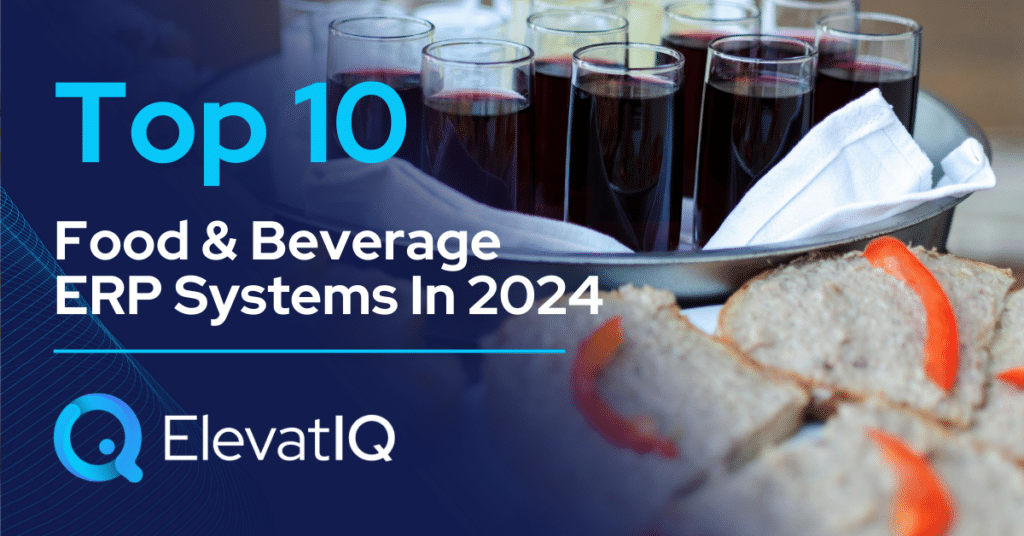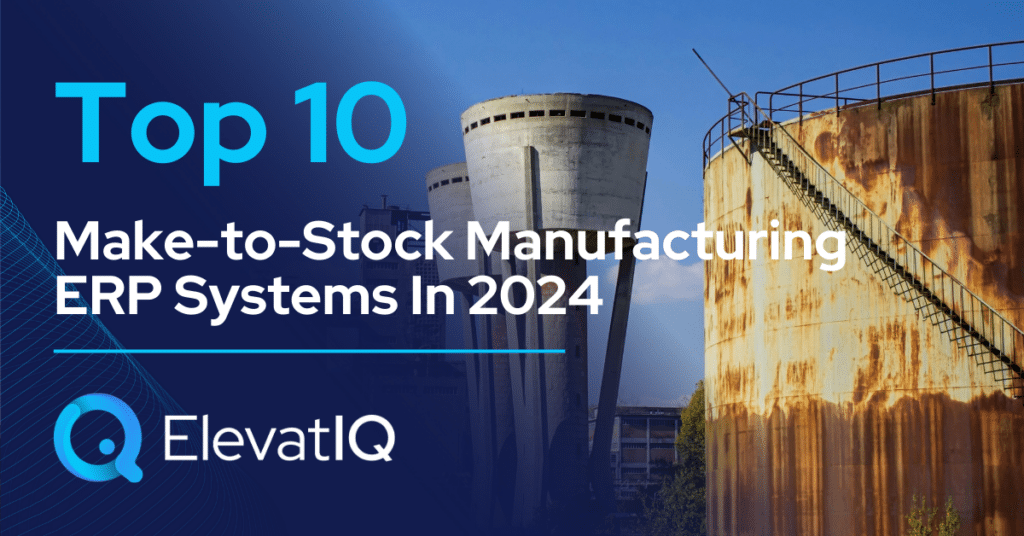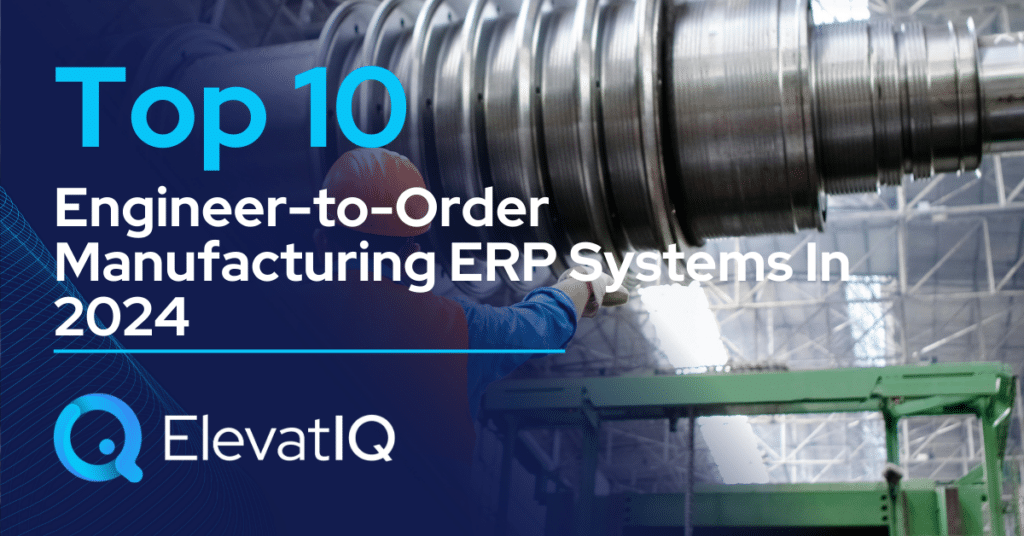ERP systems, although functionally comparable, are tailored for distinct business models and transaction volumes. What suits an enterprise may not align with a startup’s needs. Similarly, an ideal fit for a manufacturer-distributor may not be suitable for a pure-play manufacturer venturing into construction. Beyond capabilities, factors like user-friendliness, implementation ease, and industry alignment influence ERP system compatibility. These factors play a crucial role in determining why some ERP systems hold a larger market share than others.

Key to differentiating ERP systems is whether they cater to broad applications or specific business processes. In general, most ERP systems begin by targeting one micro-vertical, expanding capabilities adjacent to these industries. The smaller ERP systems often focus on basic capabilities such as transactional processing.

Another crucial aspect impacting ERP capabilities and user experience is whether the system was internally developed or grew through acquisitions. Products designed from the ground up tend to offer superior user experience. This is due to better design principles and control over the development process. Conversely, acquired products may boast deeper capabilities but could face challenges with integration, documentation, and user experience. Despite these differences, each ERP system has its place. And a meticulous analysis can help identify the right option tailored to specific needs and efficiency metrics. Now, let’s delve into the top 10 ERP systems of 2024.

Criteria
- Overall market share/# of customers. The more successful products with smaller ERP vendors might rank better than unsuccessful products from larger ERP vendors.
- Ownership/funding. Who owns the ERP vendor? Is it a private equity company, a family or a group of families, or a wealthy corporate investor?
- Quality of development (legacy vs. legacy dressed as modern vs. modern UX/cloud-native): How modern is the tech stack? Not clunky! How aggressively is the ERP vendor pushing cloud-native functionality for this product? No fake cloud! Is the roadmap officially announced? Or uncertain?
- Community/Ecosystem. How vibrant is the community? Social media groups? In-person user groups? Forums?
- Depth of native functionality (for specific industries): Last-mile functionality for specific industries natively built into the product?
- Quality of publicly available product documentation. How well-documented is the product? Is the documentation available publicly? How updated is the demo content available on YouTube?
- Product share and documented commitment (of the publisher through financial statements): Is the product share reported separately in financial statements if the ERP vendor is public?
- Ability to natively support diversified business models. How diverse can the product support multiple business models in the same product?
- Acquisition strategy aligned with the product. Any recent acquisitions to fill a specific hole with this product? Any official announcements to integrate recently acquired capabilities?
- User Reviews: How specific are the reviews about this product’s capabilities? How recent and frequent are the reviews?
- Must be an ERP product. Edge products such as HCM, CRM, eCommerce, MES, or accounting solutions that are not fully integrated to support enterprise-wide capabilities are not qualified for this list.
10. Odoo
Odoo caters to smaller companies transitioning from QuickBooks or Xero, streamlining operations from various add-ons, spreadsheets, and applications. It provides basic transactional processing across several enterprise software categories, such as ERP, CRM, and HCM. And a lot more in a consolidated database, eliminating the need for costly integrations.

An excellent choice for budget-conscious companies, especially those with in-house development teams, Odoo may face challenges without guidance from experienced ERP consultants. While Odoo’s modular design allows flexible app purchasing and provides scalability, it lacks tight integration at the data model level. This limitation can be a concern for companies aiming for stringent financial control at the data layer. This is especially true for less seasoned companies that might already struggle to regulate their internal process and data codings.
A rapidly growing platform with substantial funding and a large user base, it primarily caters to startups and smaller companies with revenue under $10 million. Its unique advantage lies in hosting operations across multiple countries in a single database. Distinguishing from solutions like QuickBooks or Xero, it might use separate financial instances for each country. The other similar ERP systems designed for multi-entity operations might not contain CRM-specific processes. With the target market and product design being very similar to Zoho and ERPNext, Odoo’s diversified applications and robust funding secure its position at #10 in our list of top ERP systems.
9. Acumatica
Acumatica serves as an excellent choice for companies graduating from smaller ERP or MRP systems. However, companies lacking experienced CFOs, operations executives, or controllers adept in process and data translations for ERP systems may face challenges with Acumatica. Founder-led companies, particularly, might find implementation demanding due to the need for sophisticated skills in translating manual processes. They might struggle to adapt to Acumatica’s structured data model with intricate business rules for enhanced financial control.

Desiring a user experience akin to Odoo or Quickbooks, Acumatica offers versatility to accommodate various business models—an advantage for those engaged in diverse operations or undergoing M&A activities. Its strength lies in industries like distribution, construction, field services, and light manufacturing. Although Acumatica has limitations in mature features like dimensional inventory or allocation, it is an excellent initial system for companies looking to streamline inventory or costs. With transactional processing and some mature capabilities, such as batch processing, Acumatica is positioned as a valuable choice for businesses venturing into their first or second ERP solution.
Acumatica is a fit for companies seeking cloud-native experience, emphasizing features like enterprise search and mobility over deeper operational capabilities. Although its dynamic marketplace helps mitigate core solution gaps, Acumatica currently lags in native global localization capabilities. These global limitations distinguish it from rivals like NetSuite and Sage Intacct. Positioned as an ideal choice for companies within the $10-100 million revenue range, the majority of Acumatica’s customer base falls under this category. Despite minor updates in usability and functionality throughout 2023, the absence of substantial advancements maintains its #9 ranking among the top ERP systems on our list.
8. IFS
Similar to other upper mid-market ERP solutions like Infor LN, QAD, or Sage X3, IFS boasts extensive functionality. This functionality is specially tailored for companies heavy in asset and field service operations. Positioned uniquely in the market, IFS appeals to enterprises seeking mature, industry-specific capabilities, reducing the need for extensive development with vanilla ERP systems like SAP or Oracle. IFS serves as an optimal alternative in the upper mid-market space, offering standalone best-of-breed asset management and field service capabilities or a comprehensive ERP solution meticulously crafted for asset-centric industries, including telco, energy, construction, MRO, airlines, and IT field services.
The IFS data model surpasses the complexity of smaller systems like Acumatica or NetSuite, demanding an experienced internal team and external advisory support to successfully align process and data codings with the intricate IFS data model. It is an ideal choice for upper mid-market companies outgrowing smaller systems, such as Acumatica or NetSuite, and requiring mature capabilities for enterprise-wide asset scheduling and maintenance. IFS not only delivers functional capabilities but also efficiently manages the transactional workload of upper-mid-market companies.
IFS boasts robust global, multi-entity capabilities and operates as a cloud-native solution. The majority of IFS customers fall within the $100M – $1B revenue range, with a significant portion nearing the $1B mark. While IFS has its roots in Europe, they have been trying to grow its presence in North America. In 2023, IFS made strategic acquisitions to enhance its AI and shop floor capabilities. However, due to the limited applicability and exciting advancements with other vendors with their cloud capabilities, we have downgraded IFS a bit but it still maintains the #8 rank among top ERP vendors.
7. Epicor Kinetic
Epicor Kinetic, their flagship solution, excels in catering to manufacturing companies with formal processes. Its distinctive data model and BOM structure, coupled with robust planning capabilities for dimensional inventory, make it ideal for industries like metal, fasteners, fabrication, aerospace, automotive, and medical devices. Epicor Kinetic’s versatile data model addresses complex planning needs for companies with diverse business models, encompassing manufacturing, distribution, and construction. Moreover, its advanced features support WBS-centric processes, enabling efficient management of large manufacturing programs with centralized cost tracking.
Epicor Kinetic boasts a sophisticated data model, surpassing entry-level ERP systems like Acumatica or NetSuite. Tailored for companies advancing beyond basic transactional processing, it targets those in need of mature manufacturing capabilities such as MRP, allocation, and scheduling. Implementation success with Epicor Kinetic requires substantial expertise in process and data coding, making it unsuitable for founder-led companies lacking seasoned operational and financial executives with ERP experience. Given its rigid revision model, companies with suboptimal SKU and BOM models may face challenges during implementation, emphasizing the need for robust internal capabilities and advisory support.
Epicor Kinetic has undergone noteworthy technological advancements, adopting a look and feel reminiscent of Microsoft Dynamics ERP systems. Despite its legacy status, it supports mature cloud capabilities like enterprise search. Positioned for companies in the $50M – $750M revenue range, it has a strong customer base within this bracket. Current limitations include its field service capabilities, which are being addressed through an acquired add-on, and its finance and accounting module, not as tightly integrated as other modern cloud-native solutions. Exciting technical developments have propelled Epicor Kinetic to the #7 position on our list of top ERP systems.
6. Infor CloudSuite LN/M3
Infor LN and M3, Infor’s flagship solutions, cater to distinct micro-verticals across various industries. Sharing similar suites and built on the Infor OS platform, both are successful in the upper mid-market, targeting the $250M – $750M revenue range. Positioned for companies surpassing entry-level ERP systems like Acumatica, Infor CSI, or NetSuite, these solutions deliver mature capabilities for intricate manufacturing and distribution operations. Infor LN/M3 provides a superior suite experience akin to SAP and Oracle, featuring enterprise-grade best-of-breed functionalities, including PLM, WMS, WFM, BI, and a Supply Chain collaboration platform.
Infor LN excels in discrete manufacturing sectors like Automotive, Aerospace, and High Tech. Conversely, Infor M3 boasts extensive features tailored for process and apparel manufacturing, covering industries such as fashion, F&B, and chemicals. Both systems are adept at facilitating advanced global operations, particularly for companies spanning multiple countries seeking to optimize cost synergies globally. Their native capabilities address global trade and compliance concerns, which are crucial for international business operations.
While Infor LN and M3 serve as excellent operational solutions for a 2-tier architecture for enterprise companies, their limited focus on certain industries might not be the best fit for enterprise companies diversifying their operations or aggressive with their M&A strategy. The intricate data model and Bill of Materials (BOM) demand significant internal expertise and external advisory assistance to extract operational efficiencies. Notably, the technology landscape for Infor LN and M3 remains somewhat patchy and less modern compared to their competitors. Furthermore, the ecosystem and consulting support for these solutions are relatively limited. Despite these challenges, Infor LN and M3 stand out as robust manufacturing solutions for upper mid-market companies with budget constraints, securing the #6 position among top ERP systems.
5. Microsoft Dynamics 365 Business Central
Microsoft Dynamics 365 Business Central, designed for SMBs, serves as a logical choice for companies outgrowing smaller ERP, MRP, and accounting systems like QuickBooks, Microsoft GP, Odoo, Katana, or Fulcrum. Positioned against competitors such as Netsuite, Sage Intacct, and Acumatica, MS Business Central offers a vibrant ecosystem with numerous add-ons catering to industry-specific needs. While the platform ensures a plethora of solutions, it demands expertise in assessing unproven code from VARs and ISVs. A deep understanding of architecture is crucial to prevent clashes among plugins, ensuring a smooth implementation process.
Microsoft Dynamics 365 Business Central is also ideal for companies with diversified, global operations aspiring to keep all of their entities in one database for easier reconciliation and tracking. While the add-ons might allow companies to use Microsoft Dynamics Business Central for complex industrial operations, the natural design and core would be compatible with companies in industries such as non-profit, public sector, FMCG, F&B distribution, very light assembly manufacturing, telco, media, tech, energy, and utilities.
The sweet spot for MS BC would be $30M-$250 in revenue and a higher revenue band for companies that might use MS BC just for accounting and financial reporting while using mature operational systems at the subsidiary level. The biggest advantage of MS BC is its consulting ecosystem and community support, which is much bigger than most ERP ecosystems, and that’s why it’s probably one of the most popular solutions across geographies. MS BC is a new entry on our list this year because of the popularity of the solution among our customers and the momentum of its ecosystem. Now, it ranks at #5 on our list of top ERP systems.
4. SAP S/4 HANA
SAP S/4 HANA remains the top choice for large enterprises with global needs and extensive localization requirements across multiple continents. In this league, its primary rival is Oracle. While alternatives like Unit 4, IFS, or Deltek might handle the workload for larger enterprises, they often lack the robust global compliance and transactional capabilities that SAP S/4 HANA offers. Additionally, SAP S/4 HANA excels in providing superior transactional workflow capabilities that are purpose-built to streamline traceability for large and complex organizations.
Moreover, SAP S/4 HANA is an ideal choice for companies seeking a best-of-breed architecture tailored to the needs of specific functions. This architecture allows for operational cores on different ledgers, which is crucial for larger distribution and 3PL companies managing complex WMS networks. Companies with intricate HCM operations and stringent compliance requirements may find it necessary to integrate a best-of-breed system. Additionally, for enterprises requiring sophisticated eCommerce platforms with components like CDP or CPQ, SAP S/4 HANA provides the essential capabilities. The flexibility and enterprise-grade best-of-breed architecture make SAP S/4 HANA a standout solution for such diverse operational needs.
Despite significant momentum among SAP customers transitioning to the cloud and notable growth for SAP S/4 HANA, SAP S/4 HANA holds the #4 position due to its marginally less mature cloud capabilities compared to other ERP systems listed. The cloud version may require additional third-party add-ons, similar to NetSuite. Nevertheless, organizations opting for the on-prem version can access superior capabilities, potentially outperforming other systems on this list.
3. Oracle ERP Cloud
Oracle ERP Cloud remains a top choice for large companies across diverse industries, including media, telecommunications, construction, energy, oil and gas, and healthcare (post-acquisition of Cerner). It is particularly suitable for organizations with substantial internal IT expertise and a requirement for integrating various proprietary and third-party software systems, such as patient claims management or utility billing solutions.
Oracle ERP Cloud is well-suited for global companies using it as their corporate financial ledger while employing other systems at the subsidiary level. Its robust financial capabilities cater to companies needing ledger-level security and hierarchical financial reporting, such as LOB, functions, or funds. Additionally, it seamlessly integrates a powerful HCM solution along with a natively integrated EPM solution.
Oracle ERP Cloud excels in risk management, advertising, and Cx cloud, particularly catering to industries like financial services and insurance. While it is a superior fit for service-centric industries, its success in product-centric industries has been limited. Often used as a corporate ledger, it might deploy another operationally rich solution at the subsidiary level in certain industries. Despite its strength for large enterprises, Oracle ERP Cloud is not the ideal choice for SMB customers. Despite growth in the install base, there have been many updates since the acquisition of Cerner last year, and because of this, Oracle ERP Cloud still maintains the #3 position on our list of the top 10 ERP systems.
2. Microsoft Dynamics 365 F&O
Microsoft Dynamics F&O is often the third choice for larger global accounts, following SAP S/4 HANA and Oracle Cloud ERP. In such cases, the corporate ERP may be utilized solely for accounting and financial reporting, while specialized operational systems handle core operations in subsidiaries. If your ERP plays a broader role in enterprise architecture, Microsoft Dynamics F&O offers a mature ecosystem with modern, cloud-native technologies, proving successful across various industries.
Microsoft Dynamics boasts a significant advantage in its extensive consulting base and a pre-integrated marketplace, a unique benefit unmatched by many ERP systems. The ecosystem stands out for the presence of large enterprise software companies as ISVs, backed by substantial funding. The credibility of these add-ons is comparable to the core product. However, it’s crucial to ensure compatibility and technical feasibility when integrating these high-quality add-ons into your architecture.
Harnessing the Microsoft Dynamics ecosystem may require assistance from an Independent ERP consulting firm to navigate the channel, given the presence of unqualified ISVs and VARs. The channel’s relative immaturity contributes to a higher rate of failures with Microsoft F&O compared to other products. Despite technical issues discovered in implementations with other products, Microsoft Dynamics F&O is one of the solid options for companies with diverse business models and sizes. Because of the strength of the solution and momentum in its ecosystem, it maintains the #2 ranking among the top ERP systems.
1. NetSuite
Securing the top position, NetSuite stands out as the leading ERP solution, driven by its success across industries, robust ecosystem, credible marketplace add-ons, and comprehensive functionality. Not as complex as some competitors like SAP S/4 HANA and Microsoft F&O, NetSuite excels in supporting diverse business models, including omnichannel architecture, matrix/dimensional inventory, and subscription-based models.
While NetSuite excels across industries, it may not be the ideal choice for industrial distributors and manufacturers due to limitations in pricing and item master capabilities. Its strength lies in supporting lighter manufacturing and consumerized products like health and beauty, fashion, apparel, and CPG. With robust financial capabilities and an integrated HCM solution, NetSuite is well-suited for service-centric industries, including smaller banks, credit unions, financial services, non-profit organizations, as well as the technology and media sectors.
While NetSuite remains the top-ranked solution due to its product quality, our team encountered challenges with over-customization and integration issues, leading to implementation failures. Working with NetSuite demands thorough vetting of their solution and architecture. Despite these challenges, NetSuite stands as a solid product, securing the #1 position on our list of the top ERP systems.
Conclusion
Choosing an ERP system can be overwhelming, given the multitude of variables. For critical digital transformation initiatives where your job security may be at stake, it’s essential to avoid selecting an ERP system based solely on popularity.
Relying on a popularity contest, such as assuming SAP will work because of its reputation, is a risky approach to ERP selection. Instead, opt for a structured approach to identify the right solution, shortlisting options relevant to your industry or market segment.


